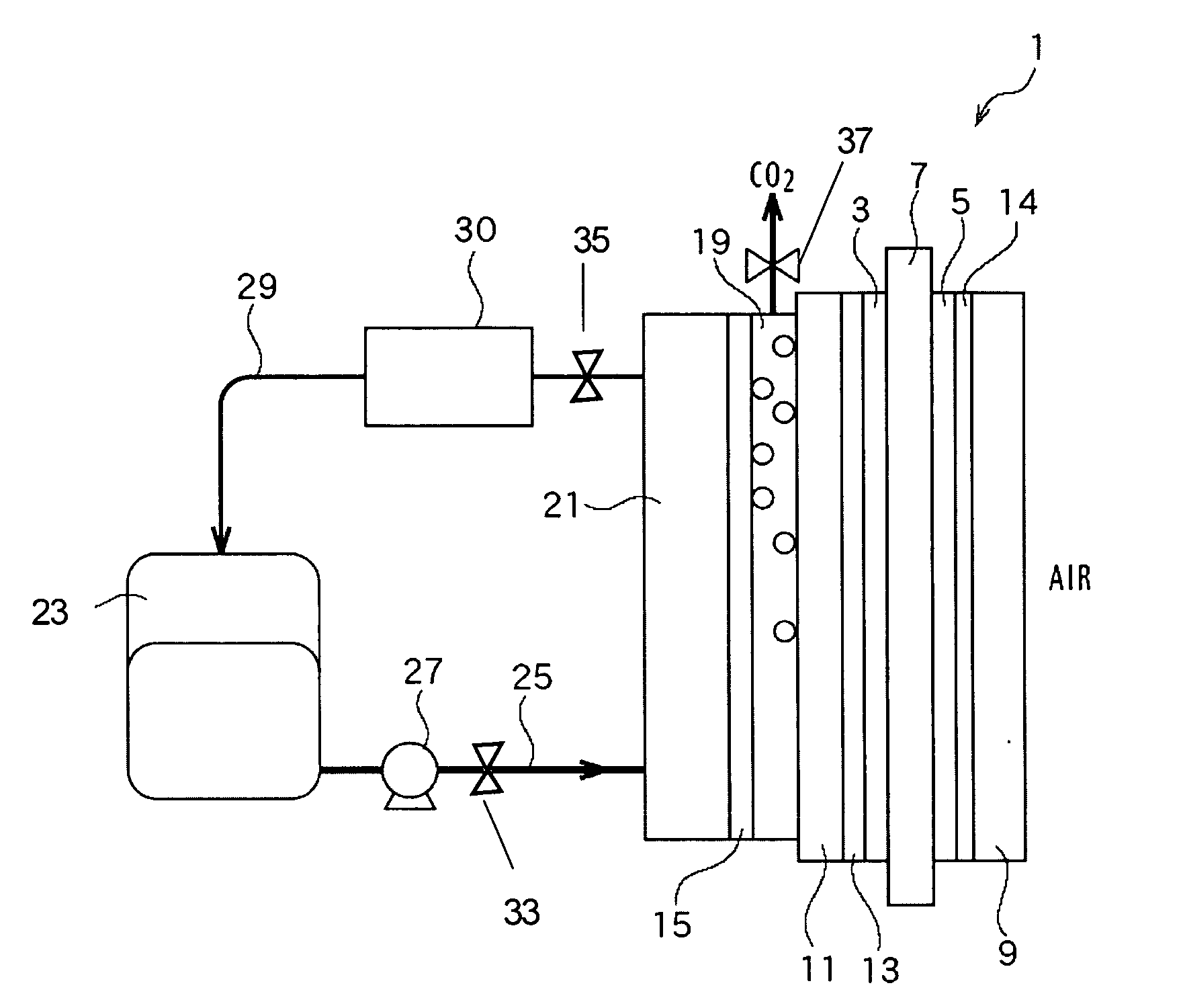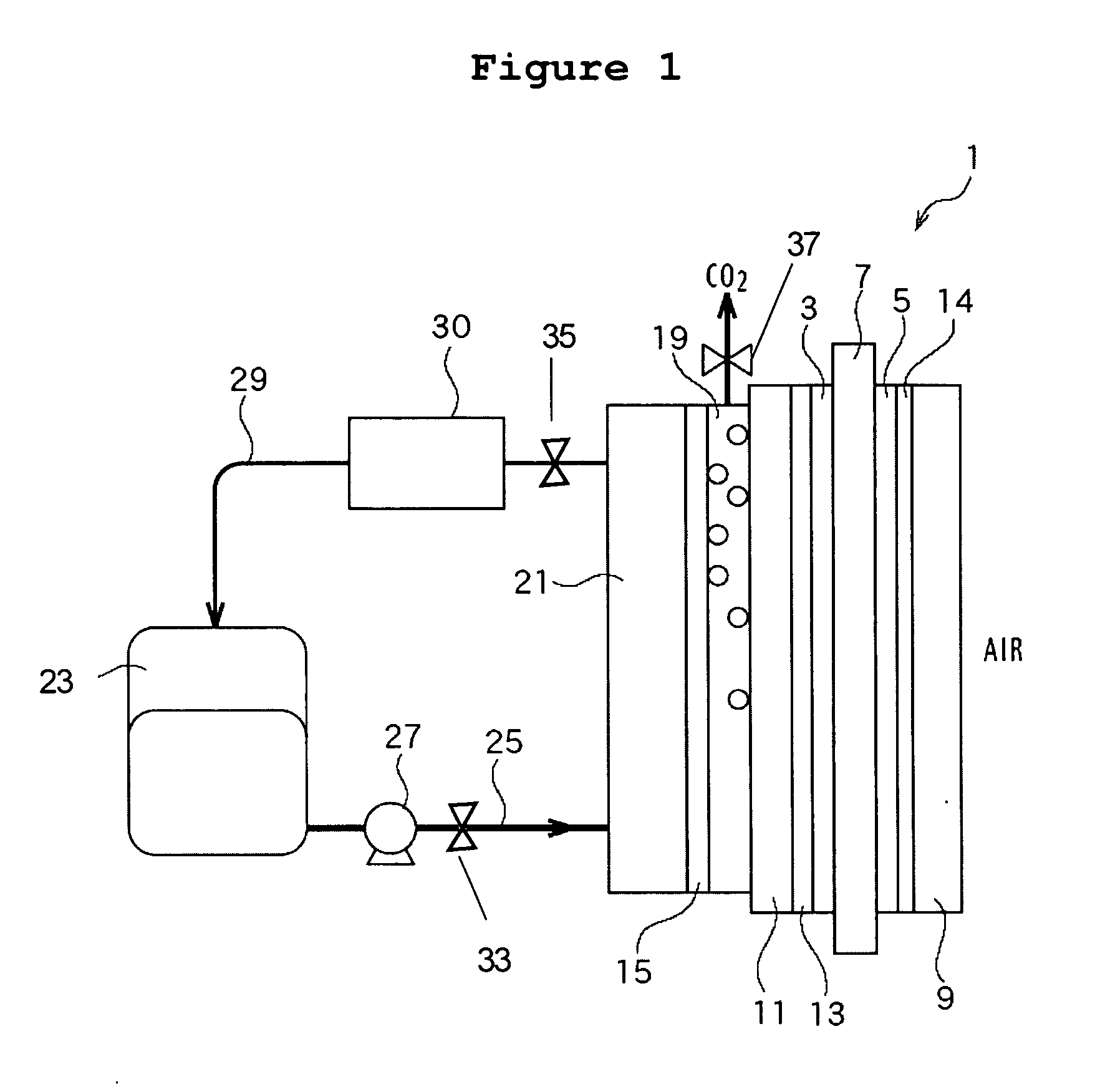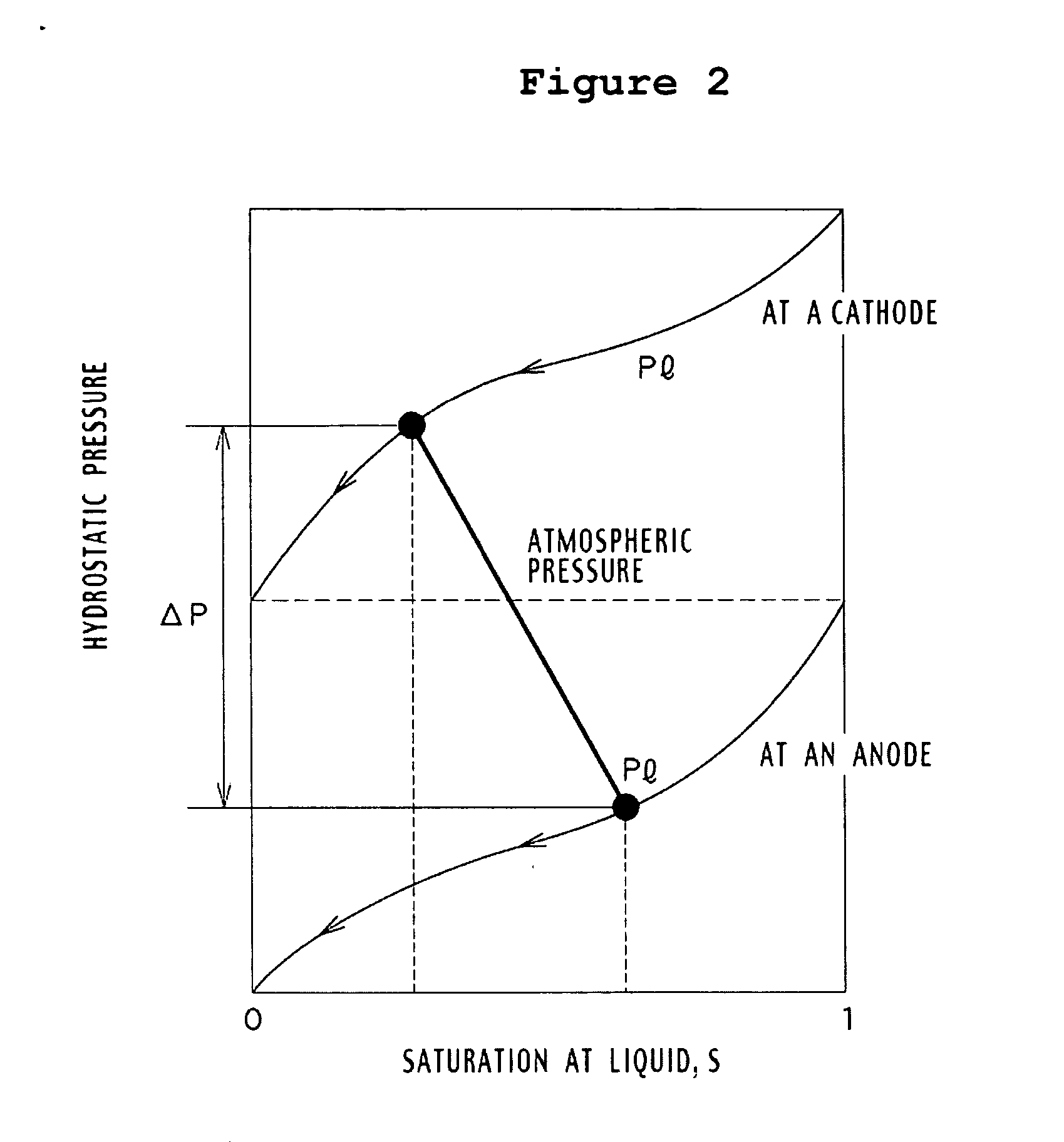Methods to control water flow and distribution in direct methanol fuel cells
a technology of direct methanol and fuel cells, which is applied in the direction of fuel cells, solid electrolyte fuel cells, fuel cells, etc., can solve the problems of reduced power generation, excessive concentration of methanol, and deterioration of mea, and achieve good fuel efficiency and cell performance.
- Summary
- Abstract
- Description
- Claims
- Application Information
AI Technical Summary
Benefits of technology
Problems solved by technology
Method used
Image
Examples
first embodiment
[0017] Referring to FIG. 1, a fuel cell system 1 according to the present invention is provided with a MEA having an anode catalyst layer 3, a cathode catalyst layer 5 and an electrolyte membrane 7 having proton conductivity put therebetween.
[0018] The anode catalyst layer 3 is for oxidizing a fuel (a methanol aqueous solution) and hence extracting electrons and protons therefrom. The anode catalyst layer 3 is provided with an anode gas diffusion layer 11 disposed adjacent thereto, made of carbon paper for example.
[0019] The cathode catalyst layer 5 is for oxygen reduction where electrons provided with a cathode gas diffusion layer 9 disposed adjacent thereto react with the protons generated at the anode catalyst layer 3 to form water at the cathode catalyst layer 5.
[0020] The electrolyte membrane 7 is made of any ion-exchange materials having proton conductivity. A preferable example thereof is a copolymer of tetrafluoroethylene and perfluorovinyl ether sulfonate and more prefera...
second embodiment
[0051] a porous body 35 is disposed between the fuel tank 23 and the assembly body 33 and the link flow path 25 and the fuel pump 27 are omitted.
[0052] Therefore the present embodiment takes substantially the same effects as the aforementioned first embodiment which allow the highly concentrated fuel to be housed in the fuel tank and the link flow path 25 and the fuel pump 27 can be omitted so that the whole constitution can be simplified.
third embodiment
[0053] the present invention will be described hereinafter with reference to FIG. 6. In the following description, substantially the same elements as any of the aforementioned embodiments are referenced with the same numerals and the detailed descriptions are omitted.
[0054] According to the present embodiment, a tank 41 stores a highly concentrated methanol and the concentrated methanol is supplied to the tank 23 by means of a pump P1. Furthermore, air is supplied to a cathode flow path 43 layered on an outer side of the cathode diffusion layer 9 and exhaust gas in the cathode flow path 43 is cooled at a condenser 45 so as to condense water vapor contained in the exhaust gas. The condensed water by means of the condenser 45 is recovered to the fuel tank 23 by means of a pump P3.
[0055] According to the present embodiment, provided that the concentration of the methanol aqueous solution stored in the fuel tank 23 varies in some degree, a variation of the concentration at the anode ca...
PUM
 Login to View More
Login to View More Abstract
Description
Claims
Application Information
 Login to View More
Login to View More - R&D
- Intellectual Property
- Life Sciences
- Materials
- Tech Scout
- Unparalleled Data Quality
- Higher Quality Content
- 60% Fewer Hallucinations
Browse by: Latest US Patents, China's latest patents, Technical Efficacy Thesaurus, Application Domain, Technology Topic, Popular Technical Reports.
© 2025 PatSnap. All rights reserved.Legal|Privacy policy|Modern Slavery Act Transparency Statement|Sitemap|About US| Contact US: help@patsnap.com



